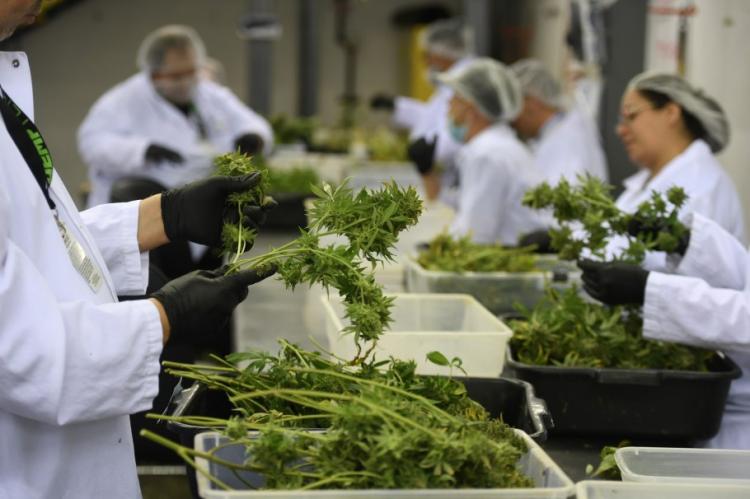“The boom is over”: Colorado cannabis growers hope volatile wholesale market is stabilizing
Entrepreneurs who broke into Colorado’s cannabis industry at the ground level — the growers — have endured economic whiplash over the last two years as the market for wholesale flower experienced volatile swings in price.
The average market rate slumped to a low of $759 per pound in 2018 after peaking at $2,007 per pound in early 2015. That rate has rebounded to $1,316 per pound this month, after five consecutive quarters on the rise, reaching the highest price in three years.
Still, many anticipate the wholesale cost will remain relatively flat in 2020. Or at least they’re hoping it will.
“The boom is over and now we’re looking at a more mature market,” said Christian Hageseth, CEO and chairman of One Cannabis, which expects to produce 14,000 pounds of marijuana in Colorado in 2020.
In the six years since recreational legalization, Colorado’s $7.6 billion cannabis industry has been grappling with stabilization between the forces of supply and demand. And that’s perhaps no more evident than in the wholesale market.
In mid-2018, the number of licensed retail grows in the state peaked at 744, according to data from the Colorado Department of Revenue’s Marijuana Enforcement Division. The influx of new cultivators and crops led to a downward swing in the average market rate, with pounds of flower selling for less than they cost to harvest and process, said Josh Monroe, owner of Fat Face Farms in Denver.
New state regulations mandating pesticide testing and microbial contamination testing only compounded the problem, forcing many farmers who couldn’t recoup their expenses to shutter. By the end of 2019, Colorado cultivation licenses dropped 8% to 683 businesses, according to the Marijuana Enforcement Division.
“You have to be agile and able to adapt quickly to the really rapidly changing environment,” said Monroe, who’s in the process of selling his 6-year-old indoor operation to industry giant Cannabis One Holdings.
Those who work in the industry are accustomed to wholesale price fluctuations in the fall, when plants from outdoor cultivations are harvested. “Croptober,” as Hageseth calls it, had no noticeable effect on wholesale prices this year, however, due in part to an early freeze and a crackdown on illicit operations, he said.
The average market rate, which changes quarterly, is the number the state uses when collecting its 15% excise tax on sales and transfers between grows and stores.
Technology also plays a role, as new software has enabled a digital marketplace for wholesale cannabis. Cultivators now upload their inventory, test results and pictures to digital platforms where buyers can compare products. With the exception of “some unicorns,” most strains fetch the average market rate, Monroe said, or growers risk being priced out completely.
“It’s become a very efficient market, so it’s pretty inelastic,” he said.
And in an industry in which profit margins often are described as thin, thanks in part to federal regulation that prohibits cannabis businesses from taking substantial tax deductions, additional testing for things like heavy metals, required as of January, is expected to eat into the bottom line.
“The cannabis industry gets this reputation that it’s a business that’s flush with cash and creating marijuana millionaires,” said Mike Lord, director of business development of LivWell, which operates two grows and 16 retail stores in Colorado and Oregon. “It’s a hard business like any other business.”
Though some market indicators suggest Colorado’s cannabis climate may soon be fully baked, there are others destined to incite change. Lord expects to see continued consolidation in the space following a 2019 law that allows public funding in cannabis. That law enabled companies like Denver’s Medicine Man to acquire independent dispensaries and product manufacturers.
And any movement on the federal level, such as approval of SAFE Banking Act to allow marijuana businesses access to bank services, would surely have local implications.
For now, Hageseth and others are waiting for the point of equilibrium.
“I hope the market settles out, that we get the right amount of producers selling at the right price, so everyone makes some money,” Hageseth said.
- Log in to post comments

